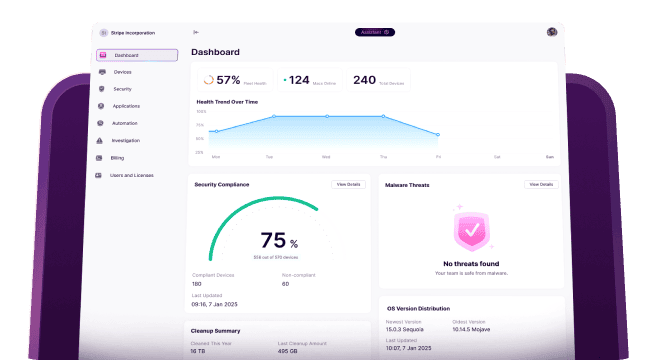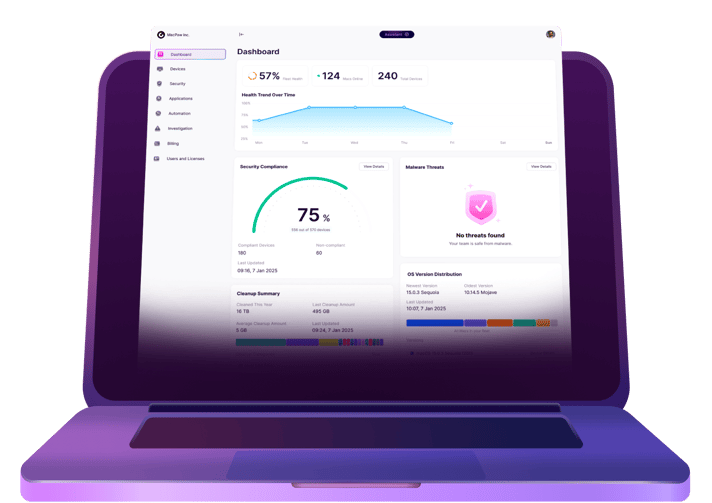Chances are, if you’re working in IT, then you already know how to install software. And if you don’t, then I think you might have a bigger problem and may need the help of another article. But all of that is beside the point.
Installing software on a single computer is one thing. But how do you manage large-scale installations? Like when a new application version is released. Or when your company decides to roll out a new app. Do you know how to push out that program installation on that scale?
The truth is there are quite a few ways to run installation software, regardless of what platforms you have in your environment. This article will show you a few of these methods to help you point yourself in the right direction.
Best methods of software installation
If you’re familiar with multiple operating systems, then you know that there are different requirements for installation. What I will show you in this article is not so much about how to run an install file but, instead, what methods you could consider to help yourself save time and how to scale those installations to run a few simultaneously.
There are a couple of things to consider while you’re reading this. First, all of these methods are platform agnostic. This means that you could use the theory of each of these methods on macOS, Windows, or even Linux.
The other thing is that even if these techniques allow you to run them on all of the computers in your environment at the same time, you should avoid the temptation to do it. It may lead to installation software failure. I guess it is the last thing you’d want because if it happens, then all of your computers are down, and so you’ll need to fix this issue.
1. Manual installations
First up is the tried and true method of manually installing your software on each machine. Yes, this is the most time-consuming approach of the bunch and perhaps most tedious, but it’s the most consistent. You’re likely to run into fewer issues installing software like this. In fact, you’re more likely to have an error during installation because of the actual computer workstation itself running it this way.
As I have already mentioned, the downside to running things this way is that it will take you forever to finish installing on all of your computers. This is especially true if you’re working in a large organization with hundreds, or even thousands, of machines. However, I personally have been in one of those companies and have done such large-scale installation projects successfully over a few weeks.
From an admin and desktop support perspective, manually installing the software can be a nice change of pace. It provides you with an opportunity to schedule the installs and go through them at the speed you want and are comfortable with.
2. Using remote desktop with installation software
The next method is to use remote desktop software to control the computers you need to install the software on. Sure, this is still fairly manual, but more ideal because you don’t need to physically touch each machine. You can also store the installation software on a shared server and copy it to the computer you’re working on.
Because you’re not physically going to each machine this way, it does mean you can have multiple installs running simultaneously. Although, you’ll have to periodically go back to each one to check on the progress. But for the majority of computers, you shouldn’t have to babysit them during the entire installation.
3. Remote software management servers
This final method is probably the one you were hoping I would get to the most. Leveraging a remote software deployment application, such as Jamf or NinjaOne, is an incredibly handy tool. Once you add the software you want to install to your repository, then you’re able to remotely push it out to a few or all of the computers you manage with this app.
Clearly, this seems like the easiest, fastest, and most efficient method to use. But that might not always be the case. Running software installation en masse with these remote deployment solutions can often yield many errors. Sometimes, it may stall your entire effort completely. So, in some ways, this method might require more babysitting than manual installations. Or it might even require you to use one of these other methods to install the software on a handful of computers anyways.
That being said, remote software deployment servers can still save you a ton of time in the long run. Plus, many come with the added bonus of a self-service tool. So, for less urgent installations, you can just add the installation file to your server, and your end user can decide when they want to install the app on their machine. Much like they would install an app from the App Store.
Large-scale software installations can feel like a massive undertaking. But with a bit of admin and project management work up front, they can be tackled bit by bit. Don’t take down your entire company and have your business grind to a halt because a piece of software corrupted every workstation. And really take into consideration implementing a rolling schedule.
Hopefully, this article has helped you think about your software installation projects in a different light. The reality, though, is that you’re probably not going to only use one of the methods listed in this article; most likely, some combination of all three would work better. It’s always best to cast the widest net and then scale it back as you need.
Try to think of each of these methods as tools in your toolbox rather than hard and fast rules for how you have to roll out software installs.








